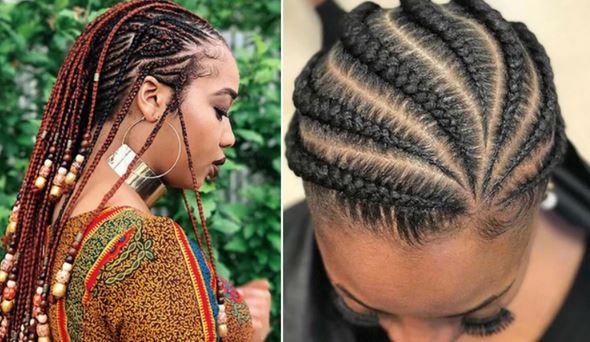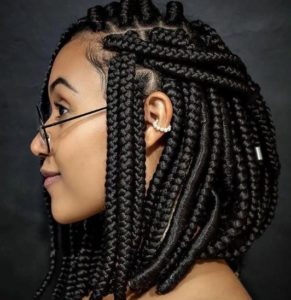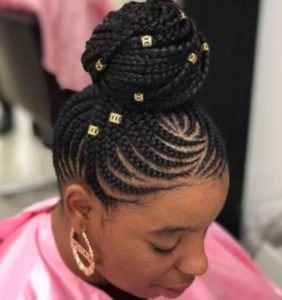Lifestyle
The fascinating history of the African cornrows

Cornrows have for so long been a characteristic of African beauty in women and life generally.
In several African civilizations, braid styles indicate a person’s age, town, marital status, power, wealth, religion, and social position. It may be referred to as cane rows to depict “the planting of sugar can by slaves” instead of corn in the Caribbean culture.
Women of every culture have, over the last decades, fallen in love with cornrows. But many do not realize the deep and vibrant history of the hairstyle. That it helped save the lives of many, precisely the enslaved Africans in America; moreover, they do not know of its function in the freedom efforts that have led to the liberties we now enjoy.
The hair style follows a particular pattern of plaiting; the hair is braided close to the scalp using an upward movement in the underhand. This creates the corn rows; Each one consists of one line of raised rows. This form of hairstyle has stayed popular in Africa, especially in West Africa.
The enslavers forced several enslaved people to shave their hair in the time of the slave trade. This was so that they would look neater and more presentable. But this action was also to make them forget their personality and culture.

Some African slaves agreed to have their hair cut, while others decided to plait their hairs in tight cornrows to look more presentable.
When it dawned on enslaved Africans to escape, the cornrows became of great importance in the transfer and creation of maps to lead them out of plantations and the home of their captors since their captors would never want them to read or write.
In Colombia, a King abducted from Africa by the Portuguese who fled slavery named Benkos Bioho established a village in Northern Colombia around the 17th century known as San Basilio de Palenque.
Bioho created his dialect, created an army of escaped enslaved people and an intelligence network to rescue other slaves and came up with the notion of having women transmit messages and create maps through their cornrows.
For example, women would plait a hairstyle called departed to signal that they needed to escape. It had heavy, tight braids, braided almost to the scalp, and was fastened into buns on the top. And another style had twisted braids, tightly plaited on their heads.
The curved braids would depict the roads they would employ in their escape. This hairstyle also served as a safe place to hide seeds and gold, which eventually served as a means of survival after they escaped.

As enslaved people never benefited from possessing writing material, or even if they did own it. Such messages or maps had to be encrypted to avoid getting into the wrong hands as they could pose a lot of trouble for the people in question.
Cornrows were the perfect way to go about such things without suspicion. Nobody would think that “black slaves” could hide entire maps in their hairstyle? Not even the most innovative slave masters. So with great ease, the enslaved Africans circulated them without anyone getting suspicious.







